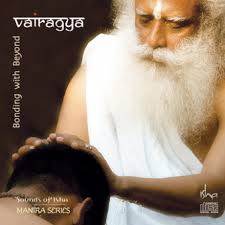| Part of a series on |
| Shaivism |
|---|
Paramashiva (Supreme being)
|
|
|
|
Saiddhantika Non - Saiddhantika
|
Read and download Kadavulai Kaatunga online aanmeega kathaigal with pictures for kids in Tamil. Lod shiva samy silaiai (sirpam ) vetil (home) vailama kudatha.
| Tirumurai | ||
|---|---|---|
| The twelve volumes of TamilŚaiva hymns of the sixty-three Nayanars | ||
| Parts | Name | Author |
| 1,2,3 | Tirukadaikkappu | Sambandar |
| 4,5,6 | Tevaram | Tirunavukkarasar |
| 7 | Tirupaatu | Sundarar |
| 8 | Tiruvacakam & Tirukkovaiyar | Manikkavacakar |
| 9 | Tiruvisaippa & Tiruppallaandu | Various |
| 10 | Tirumandhiram | Tirumular |
| 11 | Various | |
| 12 | Periya Puranam | Sekkizhar |
| Paadal Petra Sthalam | ||
| Paadal Petra Sthalam | ||
| Rajaraja I | ||
| Nambiyandar Nambi | ||
The Periya Puranam (Tamil: பெரிய புராணம்), that is, the great purana or epic, sometimes called Tiruttontarpuranam ('Tiru-Thondar-Puranam', the Purana of the Holy Devotees), is a Tamil poetic account depicting the lives of the sixty-three Nayanars, the canonical poets of Tamil Shaivism. It was compiled during the 12th century by Sekkizhar. It provides evidence of trade with West Asia[1] The Periya Puranam is part of the corpus of Shaiva canonical works.
Sekkizhar compiled and wrote the Periya Puranam or the Great Purana, (the life stories of the sixty-three ShaivaNayanars, poets of the God Shiva) who composed the liturgical poems of the Tirumurai, and was later himself canonised and the work became part of the sacred canon.[2] Among all the hagiographic Puranas in Tamil, Sekkizhar's Tiruttondar Puranam or Periyapuranam, composed during the rule of Kulottunga Chola II (1133-1150) stands first.[3]
Siva Puranam In English
Background[edit]
Sekkizhar was a poet and the chief minister in the court of the Chola King, Kulothunga Chola II. Kulottunga Chola II, king Anabaya Chola, was a staunch devotee of Lord Siva Natraja at Chidambaram. He continued the reconstruction of the center of Tamil Saivism that was begun by his ancestors. However Kulottunga II was also enchanted by the Jain courtly epic, Jivaka Cintamani an epic of erotic flavour (sringara rasa) whose hero, Jivaka, combines heroics and erotics to marry eight damsels and gain a kingdom. In the end he realises the transiency of possessions, renounces his kingship and finally attains Nirvana by prolonged austerity (tapas).[4][full citation needed]
In order to wean Kulottunga Chola II from the heretical Jivaka Cintamani, Sekkizhar undertook the task of writing the Periyapuranam.[2][full citation needed]
Periyapuranam[edit]

The study of Jivaka Cintamani by Kulottunga Chola II, deeply affected Sekkizhar who was very religious in nature. He exhorted the king to abandon the pursuit of impious erotic literature and turn instead to the life of the Saiva saints celebrated by Sundaramurti Nayanar and Nambiyandar Nambi. The king thereupon invited Sekkizhar to expound the lives of the Saiva saints in a great poem. As a minister of the state Sekkizhar had access to the lives of the saints and after he collected the data, he wrote the poem in the Thousand Pillared Hall of the Chidambaram temple.[5] Legend has it that the Lord himself provided Sekkizhar with the first feet of the first verse as a divine voice from the sky declaring 'உலகெலாம்' (ulakelam: All the world).[citation needed]
This work is considered the most important initiative of Kulottunga Chola II's reign. Although, it is only a literary embellishment of earlier hagiographies of the Saiva saints composed by Sundarar and Nambiyandar Nambi, it came to be seen as the epitome of high standards of the Chola culture, because of the highest order of the literary style.[5][full citation needed] The Periyapuranam is considered as a fifth Veda in Tamil and immediately took its place as the twelfth and the last book in the Saiva canon. It is considered as one of the masterpieces of the Tamil literature and worthily commemorates the Golden age of the Cholas.[3][full citation needed]
Significance[edit]
All the saints mentioned in this epic poem are historical persons and not mythical. Therefore, this is a recorded history of the 63 Saiva saints called as Nayanmars (ldevotees of Lord Siva), who attain salvation by their unflinching devotion to Siva. The Nayanmars that he talks about belonged to different castes, different occupations and lived in different times.[3][full citation needed]
References[edit]
- ^Glimpses of life in 12th century South India
- ^ abA Dictionary of Indian Literature By Sujit Mukherjee.
- ^ abcMedieval Indian Literature By K. Ayyappapanicker, Sahitya Akademi.
- ^Criminal Gods and Demon Devotees By Alf Hiltebeitel.
- ^ abThe Home of Dancing Śivan̲ By Paul Younger.
External links[edit]

- Periya Puranam in Tamil.
- Periya Puranam in English.
- Nayanar temples locations explained in Periya puranam
Lord Shiva is also known as “Mahadev”. Shiv is the Supreme God within Shaivism, one of the three most influential denominations in contemporary Hinduism.
This app covers a lot on devotional matters which would help you to lead life with dharma.
This devotional app is dedicated to all Shiva devotee!
Why delay then, download the app and use it offline…
Share this app with your friends and have a good time!
Watch this space for more updates.
Please rate this app if you like.